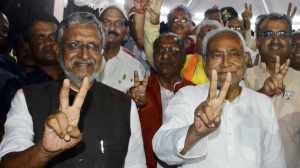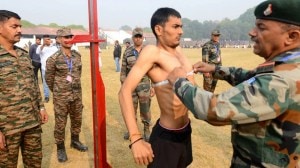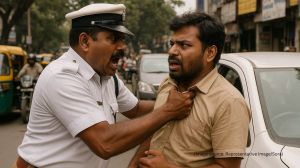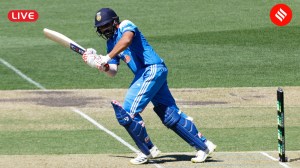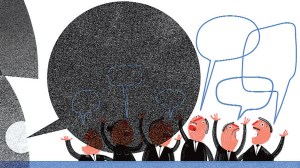Fight Pak, but fight corruption too
After horror, some hope. After anger and frustration, a loud and clear warning.

After horror, some hope. After anger and frustration, a loud and clear warning. If it was a traumatic experience to see Mumbai being held hostage for 60 hours by a bunch of terrorists who killed nearly 200 people—religious warriors who sailed all the way from Karachi and were almost welcomed to our shores by our corrupt, corroded, internally subverted and thoroughly incompetent system of governance—it was most heartening to see tens of thousands of Mumbaikars march in protest on December 3, a week after Black Wednesday. After all the talk about the city’s spirit of resilience, here was a long-awaited revival of its spirit of resistance.
Two features of the protest march were most optimistic. First, the poor and the rich mingled like never before—not since the Quit India Movement of 1942. Not surprising, since the terrorists massacred over a hundred occupants of the Taj and the Oberoi on the one hand and, 58 ordinary commuters at VT railway station on the other. Mumbai, for all its outward display of the rich-poor divide, is a city of amazing social mobility, a city where dreams, joys and sorrows are shared. I remember when Ratan Tata participated in a peace rally in front of VT station in 1993 after the horrific communal violence and serial bomb blasts in Bombay. Post 26/11, a new wave of emotional integration has swept the city, which, if properly nurtured, can bury the cynical and divisive politics of Marathi vs. non-Marathi and do wonders for both Mumbai and India.
Emotional integration of another kind—between Hindus, Muslims, Christians and others—is the second heartening feature. The loss and grief of 26/11 have united people of all communities. As a result, public anger is directed at Pakistan and Pak-based extremist organisations like the Lashkar-e-Toiba. However, the situation is delicate, and there is a big responsibility on one and all to preserve communal peace and harmony in the days to come.
Being a proud Mumbaikar, I regret that I was not among the marchers. I was in Delhi, my second home. But as I watched the live telecast of the rally, I could not but wonder if the political establishment in New Delhi and Mumbai had got the protesters’ message right. The message, as encapsulated on TV screens, was pithy: ACTION, NOT WORDS. ENOUGH IS ENOUGH. BUS, BAHUT HO GAYA!
How does one decode this message? It is easy for the political establishment, especially those in the ruling establishment, to think that by ‘ACTION’, people only mean action against Pakistan. That would be a partial and rather self-serving interpretation of the public mood. Of course, the rulers in Pakistan must be taught a lesson. They have for far too long bled India by encouraging terrorism as a low-cost, low-risk proxy war. India has every right to take stern action against Pakistan, and the nation will surely stand fully united when the moment for action, after proper preparation, arrives.
But it is not enough merely to teach Pakistan a lesson. Our rulers also need to be taught a few hard lessons in good governance. The Congress leadership, in particular, cannot escape answering some highly uncomfortable questions. Isn’t the total lack of coordination between the various intelligence agencies and security forces at the Central and State levels proof of the criminal failure of the political leadership? Wasn’t Shivraj Patil’s incompetence known right in the beginning of his tenure in the Home Ministry? Why was he protected in that crucial post for so long? Who protected him? And why? Why has the National Security Advisor, M.K. Narayanan, not been shown the door? Isn’t it an open secret in New Delhi’s corridors of power that key positions in the UPA Government, as also in Congress-ruled state governments, were filled by persons who were chosen for their loyalty to the Dynasty and not on merit? Isn’t it also an open secret that Prime Minister Manmohan Singh has no powers to choose his own ministers and senior bureaucrats? Who, if not the Prime Minister, is to be held accountable for the fact that not a single case of terrorist attack has been fully investigated during the UPA rule, and not a single culprit brought to justice?
One of the worst-kept secrets of Congress politics in New Delhi is that all the failures, wrong deeds and corrupt practices of the party’s chief ministers are overlooked if only they keep the high command in good humour by making hefty contributions on a regular basis. What else could have been the reason for tolerating a good-for-nothing and totally uninspiring person like Vilasrao Deshmukh as the chief minister of a crucial state like Maharashtra? The police force of Mumbai and Maharashtra, which was once regarded among the best in the country, has suffered scary deterioration in recent times due to political interference and high-level corruption, which is directly linked to ministerial corruption. Once the culture of bribery corrodes the internal security apparatus, is it surprising if enemies of the nation find their way with ease to strike the targets of their choice? The investigation into the 1993 serial bomb blasts had revealed how Dawood Ibrahim’s gang smuggled huge quantities of RDX and fire-arms by bribing key personnel in the security and customs departments. Has anything changed much in 2008?
Ordinary citizens know all this. As they say in Hindi, “Yeh public hai, sab jaanti hai”. They know how the entire system has been corrupted and rendered ineffectual by those politicians—and they are to be found in non-Congress parties, too—who put self-interest above the interests of the country and the common man. Which is why, when ordinary citizens shout, in utter exasperation, “Enough is enough; we want action, not words,” they are directing their anger not only at Pakistan, but also at our own corrupt politicians.
An SMS that has been doing the rounds since 26/11 conveys this message loud and clear. “We need not worry about those who came through boat. Let us worry about those who have come through vote for note.”



- 01
- 02
- 03
- 04
- 05








